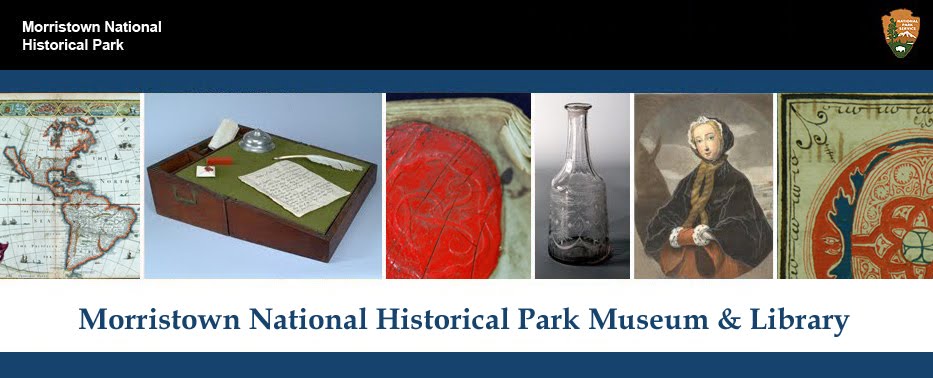 Alexander Hamilton has been blowing up lately. The nation’s first
Treasury Secretary and founder of the National Bank has been making headlines
as debate continues over proposed changes to the ten dollar bill and a hit musical based on his life
debuts on Broadway.In
keeping with the demands of popular culture,
we’ve got a document written by his most trusted confidant and companion.
Today’s featured manuscript is a letter written by Hamilton’s wife, Elizabeth
Schuyler Hamilton, to their third son James.
Alexander Hamilton has been blowing up lately. The nation’s first
Treasury Secretary and founder of the National Bank has been making headlines
as debate continues over proposed changes to the ten dollar bill and a hit musical based on his life
debuts on Broadway.In
keeping with the demands of popular culture,
we’ve got a document written by his most trusted confidant and companion.
Today’s featured manuscript is a letter written by Hamilton’s wife, Elizabeth
Schuyler Hamilton, to their third son James.
A little
background about Eliza Hamilton: She was born in Albany, New York in 1757, the
second daughter of the affluent and welltodo General Philip Schuyler. The
fiercely independent Schuyler sisters were renowned for their intelligence,
beauty, and charm throughout New York. Eliza (nicknamed Betsey) met the dashing
young Alexander in 1777 while he served as aidedecamp to George Washington
during the Revolutionary War and they were married in December of 1780 (fun
fact: Eliza was the only one of her five sisters who did not elope). Together,
the couple had 8 children and adopted one. Their marriage survived venomous
party politics, the nation’s first sex scandal, and the death of their oldest
child, but it was brought to a violent end when Alexander Hamilton was killed
in a duel with Vice President Aaron Burr in 1804. Left widowed and nearly
destitute, Eliza raised 8 children and served on the boards of multiple
charitable organizations, raised money with Dolly Madison to build the
Washington Monument, and founded the first private orphanage in New York City.
She died on November 9, 1854 at age 97, five months after the passage of the
KansasNebraska Act sparked separatism and violence in the country her husband
had helped to build from the ground up.
Some of the
grammatical errors in this letter made it a bit difficult to decode. Like most
women of her time, Betsey Schuyler did not have access to formal education.
Because of her aristocratic background she received private tutoring, but that
luxury was not available to women of less wealthy families. (It’s worth noting
that this woman was married to the economic mastermind of the early republic
without a formal acquaintance with mathematics.) Betsey never let that hold her
back from involvement in politics and society, however, because she attended
private dinners at the White House until very late in her life as presidents
continued to court the favor of Mrs. Alexander Hamilton.
Here are some photos of the letter and the envelope in which it was
sent. Some parts are pretty tricky to read, so I’ve transcribed what I could below
(and fixed some of the mechanics along the way):
New York October 24 1836
My beloved son,
How
devotedly I, in my minds eye, followed the movements of the ships that
contained the favorite son of my beloved departed Husband. how often must your
mind [have] been roused to that great disposer of the Universe that was
guarding you on your perilous voyage, could my wishes have wafted you [more]
swiftly and smoothly than a Bird your passage would soon have terminated. I
have greatly feared your delicate lungs would suffer from sea sickness. Let me
hear particularly from you and all about my daughter and her children.
Should the weather be
favourable, I wish to go(?) to Nevis, your road to the River will always remain
the same and as your farmer may find time to put the side of the road next the
fence in order so as to have early planting to ornament it, this Hobby of yours
I feel desirous of cherishing more than (?), my Alexander must make drawings of
every thing that may qualify (?) the House and ground.
I hope you will have
time to examine the police of London, something may be observed beneficial to
that of this city. My grand Daughters frequently visit me, the Mother of their
departed father claims a closer Union. They are both in good Health, Fanny has
become a teacher in Mr (?)’s Sunday school, very gratifying to Mrs Sullivan. A
great talk to get General Harrison the Presidency, these garing elections, I
fear will cause a tottering to our Constitution, have in seen the [unique]
labour of your father In it, perhaps I feel more than any one [else]. Your
Brothers are all well, Eliza requests (document is damaged)
wishes In you and all
with you, may the Almighty son (?) guard and keep you prays your affectionate
Mother
Elizabeth Hamilton
The
above is my beloved mother’s
Hair
Hair
and a
letter in her hand writing
James A Hamilton
James A Hamilton
April 12 1869
Below her signature we can see she attached a lock of hair and a wax seal to the letter. There’s something written below it, which my grandma promptly deciphered (thanks grandma):
We also have a picture of the envelope the letter came in:
 |
| The "envelope" is the back page of the folded pages. |
Just from
looking at the envelope, we can tell Eliza had some trouble sending this
letter. Part of the recipient’s address is crossed out, and it looks like the
correspondence was originally sent to Paris, only to be redirected to
Marseilles, as evidenced by the French writing below the original address (“aux
soins de” means “care of”). There are also three postal marks instead of one,
so this letter probably made a pretty rocky journey to reach James Hamilton.
The stamp at the very top is also dated December 21st, 1836, and is marked
“London”, meaning this letter took almost two months to cross the ocean and
still had a ways to go.
The content of the letter at first does not appear to be anything out of
the ordinary. Eliza writes as an aged matriarch concerned for the health of her
“departed Husband[‘s]...favorite son”. She’s worried about James’ “delicate
lungs” which, knowing her late husband, doesn’t come as a surprise. Throughout
his life, Alexander Hamilton was prone to disease and took great precautions to
avoid testing his weak immune system. It appears that James Hamilton, much like
his father, was highly susceptible to illness and injury. She also writes about
her grandchildren, James’ son Alexander and daughters Eliza and Fanny. We can
tell that Alexander is an artist and a keen observer and Fanny has recently
become a schoolteacher. Sadly, some damage to the otherwise wellpreserved
document prevents us from knowing what “Eliza request[ed]”, but it’s a safe bet
that she asks either for a souvenir or her father’s safe return home.
 What makes this letter so unusual is that it
provides an incredibly unique perspective into the psychology of the preCivil
War era. Eliza briefly mentions “a great talk to get General Harrison the
Presidency”, hinting at her involvement in politics which continued thirty
years after her husband’s death, and shows that her interest in current affairs
did not arise out of necessity. As a staunch abolitionist, it’s no surprise
that Eliza would have opposed the Democratic candidate (Harrison would have
actually lost the election by the time this letter reached James. It’s okay
though, he was elected in 1840, holding office for all of 32 days before dying
of pneumonia). She also conveys fear for the future if acidulous party politics
continue to undermine national unity; in this way, Betsey Hamilton’s views
mirror those of her late husband. Hamilton, like Washington, valued the union
above all else and believed it was the job of the executive branch to preserve
it at all cost. It would be six years after her death until Abraham Lincoln would
take the same approach to executive responsibility. With sectionalism quickly
taking hold of Congress, it is easy to imagine Betsey’s mounting anxiety that
the country would fall to pieces less than 50 years after its inception.
What makes this letter so unusual is that it
provides an incredibly unique perspective into the psychology of the preCivil
War era. Eliza briefly mentions “a great talk to get General Harrison the
Presidency”, hinting at her involvement in politics which continued thirty
years after her husband’s death, and shows that her interest in current affairs
did not arise out of necessity. As a staunch abolitionist, it’s no surprise
that Eliza would have opposed the Democratic candidate (Harrison would have
actually lost the election by the time this letter reached James. It’s okay
though, he was elected in 1840, holding office for all of 32 days before dying
of pneumonia). She also conveys fear for the future if acidulous party politics
continue to undermine national unity; in this way, Betsey Hamilton’s views
mirror those of her late husband. Hamilton, like Washington, valued the union
above all else and believed it was the job of the executive branch to preserve
it at all cost. It would be six years after her death until Abraham Lincoln would
take the same approach to executive responsibility. With sectionalism quickly
taking hold of Congress, it is easy to imagine Betsey’s mounting anxiety that
the country would fall to pieces less than 50 years after its inception.
In spite of the
hardships of life as a single mother of eight and fear for the future of her
country, Elizabeth Schuyler Hamilton was an incredibly strong woman who loved
her family more than anything. If this letter shows anything, it’s that
Alexander is not the only Hamilton who lived a life of enduring relevance.
This blog post by rising
West Morris Mendham senior,
Sami Heyman, 17.















